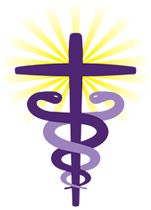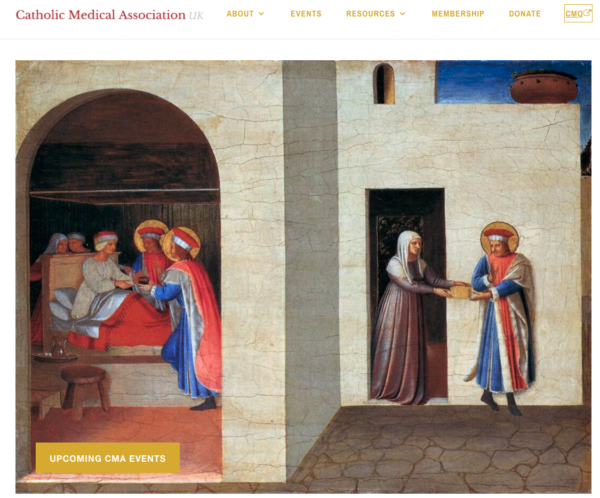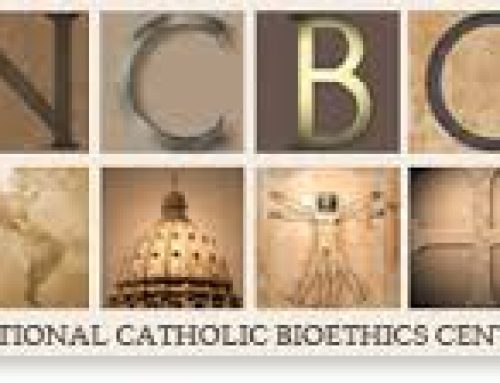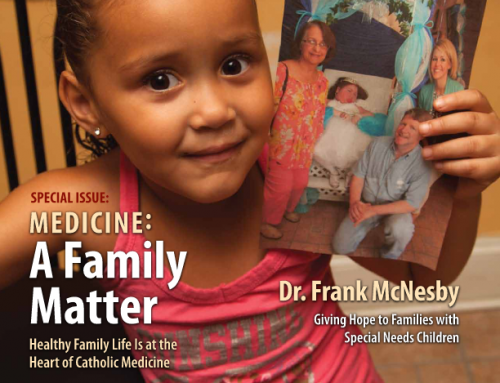Submission of the Catholic Medical Association (UK) to the World Medical Association in relation to the revised draft of the International Code of Medical Ethics.

Introduction
The Catholic Medical Association (UK) represents Catholic doctors, nurses, pharmacists, hospital chaplains and other healthcare professionals within the UK. It celebrated its centenary in 2011. The CMA has its own charity, the Catholic Medical Missionary Society, to support medical projects in the Developing World.
The CMA (UK) welcomes this opportunity to respond to the consultation on 27 April 2021 concerning the revised draft of the International Code of Medical Ethics of the World Medical Association.
We agree with paragraph 13 which states “A physician must always provide medical treatment with the utmost respect for human dignity and life.” It is also agreed that “The physician must practise with conscience, honesty, and integrity, while always exercising independent professional judgment and maintaining the highest standards of professional conduct.” (paragraph 3).
However, these two clear statements appear to be at variance with paragraph 27 which addresses issues in relation to conscientious objection.
“Physicians have an ethical obligation to minimise disruption to patient care. Conscientious objection must only be considered if the individual patient is not discriminated against or disadvantaged, the patient’s health is not endangered, and undelayed continuity of care is ensured through effective and timely referral to another qualified physician.
* This paragraph will be debated in greater detail at the WMA’s dedicated conference on the subject of conscientious objection in 2021 or 2022. However, comments on this paragraph are also welcome at this time.
The importance of recognising the fundamental right to life and human dignity is central to the ethics of all medical practice for which the conscience, honesty and integrity of the physician is essential. These issues are therefore at the centre of this submission.
The fundamental right to life and human dignity
The Hippocratic tradition
The Hippocratic Oath defined the purpose of medicine as to benefit the sick: “wherever I go and whosoever house I enter, there will I go for the benefit of the sick.” It incorporated the principles of honesty and integrity and refraining “from any act of wrongdoing or any act of seduction of male or female, bond or free.” Euthanasia, assisted suicide and abortion were forbidden. “I will give no deadly drug to anyone nor will I counsel such. I will not give a woman a pessary to induce an abortion.”
The Anthropologist, Margaret Mead explained the need to carefully define the role of the emerging medical profession in Ancient Greece: “For the first time in our tradition there was a complete separation between killing and curing. Throughout the primitive world the doctor and the sorcerer tended to be the same person. He who had the power to kill had power to cure, including specifically the undoing of his own killing activities. He who had power to cure would necessarily also be able to kill”. Margaret regards the Hippocratic tradition as a “priceless possession which we cannot afford to tarnish; yet… “society always is attempting to make the physician into a killer-to kill the defective child at birth, to leave the sleeping pills beside the bed of the cancer patient …..[it is] the duty of society to protect the physician from such requests.” According to Margaret Mead “Society is always attempting to make the physician into a killer,” and in the rise of the new medicine it is succeeding. Killing has been restored to clinical practice and the clock put back to the days before Hippocrates.” (1)
Natural law as the basis of medical ethics
In the Encyclical Veritatis Splendor, Saint Pope John Paul II explains that “natural law” is part of the rational order that determines moral actions and forms the justification of civil law: “The natural moral law expresses and lays down the purposes, right and duties which are based upon the bodily and spiritual nature of the human person…This law is defined as the rational order whereby man is called by the Creator to direct and regulate his life and actions.”
“In as much as the natural law expresses the dignity of the human Person and lays the foundation for his fundamental rights and duties, it is universal in its precepts and its authority extends to all mankind.”
The fundamental principle of the objective moral law which underlines medical practice is “natural law.” “Natural law” is “written in the human heart, [and] is the obligatory point of reference for civil law itself.” It is the fundamental basis of the democratic system. Otherwise, democracy would be reduced to a mechanism for regulating different and opposing interests on a purely empirical basis. Pope John Paul II stated: “Fundamentally, democracy is a “system” and as such is a means and not an end. Its “moral” value is not automatic, but depends on conformity to the moral law to which it, like every other form of human behaviour, must be subject: in other words, its morality depends on the morality of the ends which it pursues and of the means which it employs.”
Pope John Paul II summarised the position by saying “laws which legitimize the direct killing of innocent human beings through euthanasia are in complete opposition to the inviolable right to life proper to every individual; they thus deny the equality of everyone before the law…. Disregard for the right to life, precisely because it leads to the killing of the person whom society exists to serve, is what most directly conflicts with the possibility of achieving the common good.” According to Pope John Paul II “Euthanasia in the strict sense is understood to be an action or omission which of itself and by intention causes death, with the purpose of eliminating all suffering.” However, the practice of euthanasia, should be distinguished from a legitimate refusal of aggressive medical treatment which is either disproportionate to any expected results or because it places an unacceptable burden on the patient. When death is clearly imminent and inevitable, such forms of treatment can be refused in conscience where they would only secure a precarious and burdensome prolongation of life, so long as the normal care of the sick person is not interrupted.
The most fundamental human right is the right to life itself.
The identity of the unborn is not only a subjective fact but is also objectively known to modern embryology. “The body of a human being, from the very first stages of its existence, can never be reduced merely to a group of cells. The embryonic human body develops progressively according to a well-defined program with its proper finality.” It is possible by the use of reason to discern “a personal presence at the moment of the first appearance of a human life; how could a human individual not be a human person?” The continuity of embryonic development “does not allow us to posit either a change in nature or a gradation in moral value.” There is no change in essential human nature or gradation in moral value as life is continuous from conception to natural death. From the first moment of existence human beings demand the unconditional respect that is due to their bodily and moral totality. Therefore, from the moment of conception, the human embryo has the dignity proper to a person and the rights of every human person must be recognised.
The purpose of the civil law is to recognise the common good and fundamental human rights. Indeed, St Thomas Aquinas argued that “human law is law in as much as it is in conformity with right reason and thus derives from the eternal law.” Furthermore, “every law made by man can be called a law insofar as it derives from the natural law. But if it is somehow opposed to the natural law, then it is not really a law but rather a corruption of the law.”
After the Second World War the United Nations was formed on the basis of a Charter which committed Member States under Article 55 to promote the “universal respect for, and observance of, human rights and fundamental freedoms for all without distinction as to race, sex, language, or religion.”
This brought human rights within the domain of international law. Human rights, including the rights of the child, must be interpreted in the light of the Charter of the United Nations, the Universal Declaration of Human Rights 1948 (UDHR) (1948),the Convention on the Prevention and Punishment of the Crime of Genocide (1948), the Declaration of the Rights of the Child (DRC) 1959 and the International Covenant on Civil and Political Rights 1966 (ICCPR).
The Preamble to the UDHR (1948) recognises “that the foundation of freedom, justice, and peace in the World” is the “recognition of the inherent dignity and equal and inalienable right of all members of the human family.” The Declaration recognises, in order, the right to life, then freedom [liberty] and finally security of person. The right to life is logically the basis for the enjoyment of all other rights and freedoms. Everyone has the right to life as a “member of the human family.”
The United Nations Charter is predicated on the right to life of human beings by virtue of the fact that they are members of the human family. The unborn are persons in so far as they are living human beings. In modern obstetrical practice, mothers will recognise their children for the first time when seen on ultrasound.
The Convention of the Rights of the Child (CRC) was adopted by the General Assembly of the United Nations on 20th November 1989. The Preamble, states “the child, by reason of his physical and medical immaturity, needs special safeguards and care, including appropriate legal protection, before as well as after birth.”
The Oviedo Convention for the Protection of Human Rights and Dignity of the Human Being (1997) is an internationally recognised legal framework for the protection of human rights in the biomedical field. The Convention should be read in relation to other international human rights protections and deals with a range of issues including biomedical research and human genetics, with a prohibition of genetic testing as a means of discrimination and modification of the human genome and human cloning. The Explanatory note explains the use of the terms “human being” and “human dignity”: “The Convention also uses the expression “human being” to state the necessity to protect the dignity and identity of all human beings. It was acknowledged that it was a generally accepted principle that human dignity and the identity of the human being had to be respected as soon as life began.” Article 2 of the Convention affirms the primacy of the human being over the interests of Science or Society. Indeed, “The whole Convention, the aim of which is to protect human rights and dignity, is inspired by the principle of the primacy of the human being, and all its articles must be interpreted in this light.” Article 13 of the Oviedo Convention rules out germ line therapy whilst permitting somatic gene therapy. Germline therapy seeks to prevent the transmission of genetic defects to future generations. Somatic gene therapies aim to correct genetic defects in somatic (non-reproductive) cells and the effects are restricted to the individual being treated.
Conclusion.
There is a fundamental and inalienable right to life of all human beings which forms the basis for the enjoyment of all other rights. The fundamental human right to life which underlines the inherent dignity, worth and inalienable rights of all human beings must be protected by law.
The right to Conscientious objection.
The duties of a physician as determined by the General Assembly of the World Medical Association in 1949 as last amended in 2006 state that:
“A physician shall –
exercise his/her independent judgment and maintain the highest standards of professional conduct…
respect a competent patient’s right to accept or refuse treatment….
not allow his/her judgment to be influenced by personal profit or unfair discrimination
be dedicated to providing competent service in full professional and moral independent, with compassion and respect for human dignity
deal honestly with patients and colleagues and
report to the appropriate authorities those physicians who practice unethically or incompetently or who engage in fraud or deception”.
The right to freedom of conscience is recognised in Article 18 of the International Covenant on Civil and Political Rights (ICCPR) and Article 9 of the European Convention on Human Rights. It is recognised by the European Court as the foundation of a democratic society. The Charter of Fundamental Rights of the European Union has enshrined the right to conscientious objection which is not confined to military service. On 24 April 2014 in Resolution 1928 of the Parliamentary Assembly of the Council of Europe reiterated the right of conscientious objection in Medicine and called on member States to “ “ensure the right to well defined conscientious objection in relation to morally sensitive matters, such as military service or other services related to health care.”
Physicians have an obligation to act with integrity and honesty whilst recognizing the fundamental right to life and human dignity of the patient. In the case of mothers this incudes the welfare of their children, both before and after birth. The essential motivation of the physician is positively to enhance the wellbeing of patients.
The World Medical Association proposes to consider the issue of conscientious objection in 2021 or 2022 but has invited comments during this consultation. All physicians must act with integrity and honesty according to the highest professional standards and ethics. This depends upon the three primary functions of Medicine which are to promote health through the prevention and treatment of disease, to alleviate distressing symptoms and to restore mental, physical and spiritual wellbeing.
Medicine at the service of all human life.
Medicine has an important role to play in the service of all human life. It is important to do everything possible to help families, mothers and children, particularly those in difficulty. The unborn child is a unique member of the human family with a father and a mother who has basic human rights for which society and the medical profession have corresponding obligations.
Bodily existence is a fundamental good and is the necessary prerequisite and basis for the enjoyment of all other rights. One can never claim the freedom of personal opinion or convictions as a pretext for attacking the rights of others, especially the right to life. The right to life is inalienable and can neither be conferred nor denied by Society, any public authority or the medical profession. It is universal and inclusive and so exists for all without discrimination on the basis of age, gender, race, social or personal status. The right to life “is antecedent to its recognition; it demands recognition and it is strictly unjust to refuse it.”
Respect for all human life from the moment of conception
When helping a pregnant woman the doctor must consider two persons, the mother and her unborn child. From the moment of conception, a new life comes into existence which is distinct from the life of the father and the mother. “It would never be made human if it were not already human.”
The Declaration of Oslo of the World Medical Association in 1970 quoted the original Declaration of Geneva in 1948 and stated:
“The first moral principle imposed upon the doctor is respect for human life as expressed in a clause of the Declaration of Geneva: “I will maintain the utmost respect for human life from the time of conception.”
The Cairo Declaration (1994) excluded direct deliberate abortion as a legitimate means of family planning. This position was reaffirmed in 2014 in the United Nations Beijing Declaration. In 2020, 35 UN States in the Geneva Consensus Statement reaffirmed that abortion should not be included as part of sexual and reproductive health. The European Court of Human Rights has held that a mother’s right to privacy cannot be interpreted as a right to abortion. The private life of the mother is closely linked to that of the unborn child.
The rights of the unborn will be increasingly important with the development of intrauterine therapies, including interventions and surgery to correct congenital abnormalities before birth. The right to life is also threatened by abortion, foeticide and infanticide.
Decriminalisation would remove criminal sanctions against abortions for social reasons. There would be no criminal sanction against the deliberate destruction of unborn life in the case of foeticide, gender selective abortion, pregnancy reductions and “eugenic” abortions. There would also be less protection for women against coercive abortions in situations of domestic abuse, ethnic cleansing or genocide. A denial of the rights of the unborn would pave the way for the use of human embryos as experimental subjects, for the development of gene editing and germline therapies and possible commercial exploitation of embryo research. On 8th March 2005, the UN General Assembly approved a declaration calling on Member States to ban all forms of human cloning, including therapeutic cloning, as being “incompatible with human dignity and the protection of human life.”
It is essential that doctors do not engage in any form of inhumane or degrading treatment such as forced sterilisation, female genital mutilation and unethical human experimentation contrary to the Helsinki Declaration. Physicians must have the right to conscientious objection since: “To refuse to take part in committing an injustice is not only a moral duty; it is also a basic human right.”
Fundamental and inalienable right to life of all human beings from conception to death.
The human embryo, formed at conception, is “a genetically human, discrete, and alive unit, organically single and individual, with a self-contained power to organise his or her own growth, multiplication and differentiation in a way that ordinarily leads to a human adult.”
With the advent of three-dimensional ultrasound in obstetrics, there can be no doubt that unborn children are part of the human family. In utero photographs and videos are often the first images to appear in the family album and allow very early bonding. The UN Declaration does not make a distinction between human beings, who are members of the human family and human persons. The definition of some human beings as “non-persons” is deeply problematic but has been a means of excluding individuals from Society often with a view to their elimination. There are numerous historical examples of human beings who have been regarded as non-persons, who could then be eliminated, including: American Indians, Slaves, Aborigines and Jews.
Euthanasia and assisted suicide.
Euthanasia or assisted suicide have been legalised in a number of countries including the Netherlands, Belgium, Columbia, Luxembourg, Switzerland, Spain, Germany, Japan, Albania, USA, Australia and Canada. However, on the other hand, on 11th September 2015 the British Parliament overwhelmingly rejected moves towards assisted dying by 330 to 118 votes.
In Canada, medical practitioners with conscientious objections are required to refer their patients for euthanasia. In at least one instance, a hospice, the 10-bed Irene Thomas Hospice in Ladner, British Columbia, is run by the Delta Hospice Society, has been faced with closure for refusing to accommodate euthanasia on its premises. Nevertheless, there is a hospital directly next door to Delta where patients can go to receive a lethal injection. Denying the right of conscientious objection to euthanasia therefore risks not only the closure of hospices and a denial of hospice philosophy as laid down by Dame Cecily Saunders in England and Dr Elizabeth Kubler-Ross in America, but will also discourage doctors and nurses from entering into Palliative Care.
The above case illustrates that the right to conscientious objection includes the right not to refer on to another practitioner to perform an act which the doctor feels is intrinsically unethical and not in the best interest of the patient. This applies to institutions as well as to individual practitioners.
Conclusion
All human beings are members of the human family and as such are human persons and the subjects of rights for which Society has corresponding obligations. “The child is not a generic, anonymous foetus. We can identify the child’s father, and whether the child is a son or a daughter. We can ascertain long before birth that the child is a unique member of the human family, biologically, genetically, and genealogically.”
Unborn children must not be reclassified as individuals who are less than human and therefore expendable in favour of the rights of others, Science or Society. The right to life must remain central to our understanding of human rights and international law. Medicalised killing in the form of abortion, assisted suicide and euthanasia are logically inconsistent with the fundamental principles and philosophy of the UN Declaration and Covenants and the Hippocratic tradition. The six underlying foundational principles within the Declaration of Human Rights and subsequent Conventions are inclusion, inherency, equality, inalienability, indivisibility and universality.
Inclusivity means that the rights refer to “everyone” and “every person” without discrimination. The rights are inherent to all living human beings by virtue of their humanity and membership of the human family. They are not conferred rights that are granted by external government. Inalienability refers to rights that cannot be removed, destroyed, transferred or renounced even by the individuals themselves, their parents or Society. Equality means that no human beings are “more equal” than others but that everyone has equal rights as members of the human family. “The notion of equality springs from the oneness of the human family and is linked to the essential dignity of the individual.” Human rights cannot be predicated on the view that certain individuals are either superior or inferior to others nor are they premised on the child being born. The act of being born does not confer rights, but rather the fact of being human. The rights are indivisible and cannot be sacrificed or denied in order to enhance the rights of others. No individual or Institution should be required to be complicit in acts that are against their right to conscience and declared mission. Finally, human rights are universal to be upheld everywhere and at all times irrespective of culture.
The inalienable rights of all human beings, both before and after birth, must be respected by the World Medical Association. These fundamental human rights are inherent and derive from our human nature and membership of the human family and must be recognised and protected through the rule of law and professional codes of medical ethics.
Dr Michael Delany SRN MBBS MA (Bioethics)
President of the Catholic Medical Association (UK)C
39 Eccleston Square,
London SW1V 1BX.
E-mail address: president@catholicmedicalassociation.org.uk
REFERENCES
1.- Quoted in “Psychiatry and Ethics” 1972. Maurice Levine. Publisher George Braziller. University of Michigan. pp 324-325. ISBN 0807606421 ISBN 9780807606421
2.- Veritatis Splendor. John Paul II. 1993. Para 50.
3.- Veritatis Splendor. John Paul II. 1993. Para 51.
4.- Evangelium vitae. John Paul II. 1995. Para 70.
5.- John Paul II. Evangelium vitae. 1995. Para 70
6.- Evangelium vitae. John Paul II. 1995. Para 72.
7.- Evangelium vitae. John Paul II. 1995. Para 65.
8.- Evangelium vitae. John Paul II. 1995. Para 65
9.- Congregation for the Doctrine of the Faith, Declaration on Euthanasia Iura et Bona (5 May 1980), II: AAS 72 (1980), 546
10.- Dignitas personae § 4. Congregation for the Doctrine of the Faith. 2008. Instruction Dignitas personae on Certain Bioethical Questions. Available at: http://www.vatican.va/roman_curia/congregations/cfaith/documents/rc_con_cfaith_doc_20081208_ dignitas-personae_en.html.
11.- Instruction on respect for human life in its origin and on the dignity of procreation. Replies to certain questions of the Instruction Dignitas Personae on certain bioethical questions. Dignitas Personae § 5. Congregation for the Doctrine of the Faith. Rome. 2008. day. Donum vitae. Congregation for the Doctrine of the Faith. Rome. 1987.
12.- Instruction Dignitas Personae on certain bioethical questions. Dignitas Personae § 5. Congregation for the Doctrine of the Faith. Rome. 2008.
13.- Evangelium vitae.5. John Paul II. 1993Para 71. Encyclical letter of Pope John XXIII (1963) in which he stated: “it is generally accepted today that the common good is best safeguarded when personal rights and duties are guaranteed.”
14.- Summa Theologiae, I-II, q. 93, a. 3, ad 2um.
15.- Summa Theologiae, 1-11, q. 95, a. 2. Aquinas Evangelium vitae.5. John Paul II. 1993Para 71. Encyclical letter of Pope John XXIII (1963) in which he stated: “it is generally accepted today that the common good is best safeguarded when personal rights and duties are guaranteed.”quotes Saint Augustine: “Non videtur esse lex, quae iusta non fuerit”, De Libero Arbitrio, I, 5, 11: PL 32. 1227.
16.- Hence, on 22.05.68 the Declaration of Teheran of the International conference on Human Rights (U.N.Doc.A/CONF. 32/41) states: “The Universal Declaration of Human Rights states a common understanding of the peoples of the World concerning the inalienable and inviolable rights of all members of the human family and constitutes an obligation for the members of the international community.”
17.- Article 2 defines genocide “any of the following acts committed with intent to destroy, in whole or in part, a national, ethnical, racial or religious group … ”, including: (a) Killing members of the group; (b) Causing serious bodily or mental harm to members of the group; (c) Deliberately inflicting on the group conditions of life calculated to bring about its physical destruction in whole or in part; (d) Imposing measures intended to prevent births within the group (e) Forcibly transferring children of the group to another group.
18.- Preamble to Universal Declaration of Human Rights 1948, G.A. res 217A (II), UN Doc A/810 at 71 (1948)
19.- The Preamble is part of the Treaty itself see: Vienna Convention on the Law of Treaties 1969, Article 2(1)(a) and 31(2). In contrast the travaux preparatoires are a supplementary means of interpretation – Vienna Convention on the Law of Treaties, Article 32.
20.- Convention for the protection of Human Rights and Dignity of the Human Being with regard to the Application of Biology and Medicine: Convention on Human Rights and Biomedicine. 04/04/1997 – Treaty open for signature by the member States, the non-member States which have participated in its elaboration and by the European Union, and for accession by other non-member States Treaty No. 164.
21.- Explanatory Report – ETS 164 – Human Rights and Biomedicine (Convention). Chapter 1. General Provisions. Paragraph 19. Available at: https://rm.coe.int/16800ccde5
22.- Explanatory Report – ETS 164- Human Rights and Biomedicine (convention). Paragraph 21.
23.- Explanatory Report – ETS 164- Human Rights and Biomedicine (convention). Paragraph 22.
24.- Explanatory Report – ETS 164- Human Rights and Biomedicine (convention). Paragraphs 90 &91
25.- “Whereas recognition of the inherent dignity and of the equal and inalienable rights of all members of the human family is the foundation of freedom, justice and peace in the world.” (Preamble to the Universal Declaration on Human Rights).
26.- Everyone has the right to life, liberty and security of person.” (Universal Declaration, Article 3).
27.- “Every human being has the inherent right to life. This right shall be protected by law. No one shall be arbitrarily deprived of his life.” (ICCPR, Article 6-1).
28.- Everyone is entitled to all the rights and freedoms set forth in this Declaration, without distinction of any kind, such as race, colour, sex, language, religion, political or other opinion, national or social origin, property, birth or other status.”(Universal Declaration Article 2, ICCPR Article 2 (1) CRC Article 2.1).
29.- “Everyone has the right to recognition everywhere as a person before the law.” Universal Declaration Article 6, ICCPR Article 16.
30.- “All are equal before the law and are entitled without any discrimination to equal protection of the law.” (Universal Declaration Article 7, ICCPR Article 26).
31.- Adopted by the 3rd General Assembly of the World Medical Association, London, England, October 1949 and amended by the 22nd World Medical Assembly, Sydney, Australia, August 1968 and the 35th World Medical Assembly, Venice, Italy, October 1983 and the 57th WMA General Assembly, Pilanesberg, South Africa, October 2006.
32.- ECHR, Kokkinakis v. Greece, No. 14307/88, 25 May 1993.
33.- Charter of Fundamental Rights of the European Union, Article 10.2, 2000.
34.- Declaration on Procured Abortion. Sacred Congregation for the Doctrine of the Faith. Ratified by Pope Paul VI. June 28th 1974. [Paragraph11]
35.- Declaration on Procured Abortion. Sacred Congregation for the Doctrine of the Faith. Ratified by Pope Paul VI. June 28th 1974. [Paragraph 12]
36.- Cairo Declaration 1994, Article 8.
37.- Geneva Consensus Statement on Promoting Women’s Health and Strengthening the Family, 22 October 2020.
38.- ECHR, A, B and C v. Ireland [GC], no. 25579/05, §212, 2010.
39.- For example, gene editing using CRISPR-Cas9
40.- United Nations Declaration on Human Cloning. Resolution adopted by the General Assembly. 8th March 2005.
41.- Evangelium vitae. Para 74.
42.- Anthony Fisher in “IVF: The Critical Issues”. (Melbourne: Dollins Dove, 1989), 133.
43.- Chief Justice Taney in the US Supreme Court, excluded Dred Scott (a Black Slave) from personhood in Dred Scott v Sandford (1857).
44.- See: R N Procter, Racial Hygiene: Medicine Under the Nazis (Cambridge, MA: Harvard Press 1988).
45.- By what Right? Are they not human beings? Loving Every Child: Defying Eugenics Conference Auckland, August 4th 2012. Rita Joseph. Available at: http://www.savingdownsyndrome.org/wpcontent/uploads/2012/09/By-what-right-Rita-Joseph.pdf
46.- By what right? Are they not humans? Rita Joseph. Auckland . August 4th 2012.
47.- Inter-American Court of Human Rights. Proposed Amendments to the Naturalization Provisions of the Constitution of Costa Rica, Advisory Opinion OC-4/84 of January 19, 1984, Series A, No. 4, p. 104, para. 55.








